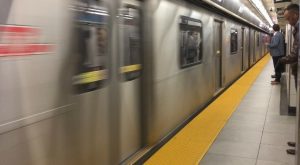Free public transport is a dreamy idea for post-secondary students, but is it realistic?
In a poll conducted by second-year students at the Ryerson School of Journalism, 60.9 per cent out of 1,081 students, said they support making public transit free in Toronto. However, many of these students admitted they did not have a solid understanding of how a free transit system might work.
Mayoral candidate Saron Gebresellassi has been the lone candidate to include a right to free transit in their platform. A mission statement on Gebresellassi’s campaign website states that free transit “will help address climate change, urban gridlock and sprawl, and cut down on spending for road maintenance.”
However, the Ryerson City Building Institute (RCBI), a multidisciplinary centre which researches and addresses complex urban problems, says there are good reasons for deploying fares.

“Maintaining some sort of user free transit gives us latitude to tinker with fare structures to achieve public policy objectives,” the RCBI said in a blog post. “Whether the goal is to shift travel behaviour, increase ridership, manage demand, or provide equity benefits, there is a fare-based tool for that.”
The institute cites Tallinn, the capital of Estonia, as an example of a free-transit city. In Tallinn, where there is a population of approximately 425,000, transit is 100 per cent free with the goals of easing road congestion and reducing pollution. But reports show the initiative has produced mixed results, such as shifting more walkers to transit than drivers and increased average driving distances.
“I think the demand for free transit is about universal access, and I think that’s where everybody would like to get,” said Shelagh Pizey-Allen, executive director of TTCRiders, a membership-based advocacy group of Toronto Transit Commission (TTC) users. “We’d like to see public transit built where it’s needed the most—in undeserved neighbourhoods. Because free transit isn’t very useful if you can’t get on the bus, or if you don’t have transit that comes near your house.”
Speak Visually. Create an infographic with Visme
Tallinn’s free transit is funded by federal tax as opposed to fares. About 73% of TTC operations are paid for through fare, with the remaining 27% being funded by Toronto’s tax-supported budget, according to their 2017 annual report.
“The fact is, we already need to find greater resources to meet the growing demand for TTC service in Toronto, not cut its most reliable and basic source of revenue,” the RBCI added.
In addition to students, the movement for free transit has become popular among leftist groups in Canada such as The Bullet, a “publishing venue for the socialist left,” and The International Socialists, a network of revolutionary socialist organizations with chapters in Canada.
“The TTC is expensive and incredibly dysfunctional, we’d definitely advocate for free public transit,” said Olive Pape, a member of Ryerson’s Socialist Fightback. “We want a reform that is going to last longer than one government.”
Ryerson School of Journalism students conducted in-person surveys about Toronto election issues with 1,081 undergraduate and graduate Ryerson students in October prior to the municipal election. The results are considered accurate to within plus or minus three percentage points, 19 times out of 20.

Leave a Reply